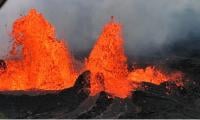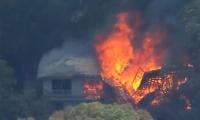It’s time to clarify certain misperceptions about the Diamer-Basha Dam. The dam has been studied since the 1980s. Its preliminary feasibility was carried out by MONENCO of Canada and they proposed an Earth Core Rockfill Dam (ECRD). It was not a CFRD as claimed in a recently-published article and Gen Safdar Butt was never the designer of the dam.
In the Detailed Feasibility Study carried out by NEAC Consultants, that included top-notch consultants, various dam types were studied. CFRD and ECRD were also studied but were ruled out mainly due to the following reasons: a) there was no sufficient source of plastic clay. Hence ECRD could not be constructed; b) river alluvium was found to be prone to liquefaction. This means the alluvium would lose all its bearing capacity in a large earthquake (liquefy). Anything built on the alluvium would then fail. Hence founding the dam on the alluvium was ruled out and so CFRD and ECRD were ruled out; and c) there are various cases of Glacial Lake Outburst Floods (GLOF) in the Indus river in the northern areas. This can cause large and sudden floods. An ECRD or CFRD could be overtopped in such an event and these dam types cannot sustain overtopping. An RCC dam can, on the other hand, sustain overtopping without failure.
Based on the above and many other similar considerations, an RCC dam type was selected. The aforementioned recent article has also claimed that CFRD would have cost half of RCC. This is wrong as costing exercises were carried out in the Detailed Feasibility stage and the CFRD and RCC costs were comparable.
Another concern in the media is about the transportation of cement and other material from Khyber Pakhtunkhwa etc to the site through the KKH. This is indeed a challenge. This has been studied in detail during the feasibility and detailed design stage and logistical solutions have been provided.
Another very pertinent point is that different groups of consultants have designed dams on the Indus river in the same area, where the geology and seismicity is pretty similar. These include the Bunji dam and Dasu dam among others. All these different groups of consultants selected the RCC type of dam. Their work was also reviewed by a different set of world class experts. This shows that rigorous technical studies led to the same conclusion: that RCC is the best kind of dam for the area.
The Preliminary Feasibility Study of the Basha Dam was carried out by the Montreal Engineering Company of Canada (MONENCO) in 1984 and the study proposes 200 high-zoned earth/ rockfill dams with power generation of 3360 MW and live storage capacity of 5.7 MAF.
The International Panel of Experts engaged for review includes: Alfonso Posada (chairman); Prof Fiedrich-Karl Ewert; Prof Francesso Iliceto; Syed S Kirmani; Earnest L Pemberton; Nelson L de Pinto and Walkeer Wittke. Review and up-dation of the Preliminary Study Report was carried out by consultants: NESPAK, Binnie Black & Veatch, M W Harza (MWH), and ACE.
As per the detailed feasibility, the project features are: a 282m high Roller Compacted Concrete (RCC) Dam with power generation of 4500 MW and live storage capacity of 7.3 MAF. The International Panel of Experts engaged for the review of the feasibility study included: J Barry Cooke, Dam and Hydraulic Expert, USA; Brian Forbes, RCC Expert, Australia; Nelson L de Pinto, CFRD/ RCC Dam Expert, Brazil; and Amjad Agha, geotechnical expert, Pakistan.
The review of the Feasibility Study Report, Engineering Design and Tender Documentation was carried out by Diamer Basha Consultants (DBC), a joint venture of Lahmeyer International, Germany, and Barqaab and PES in association with AMEC, Canada.
DBC proposed a 272m high RCC dam with power generation of 4500 MW and live storage capacity of 6.4 MAF. It is pertinent to mention that DBC utilized many studies carried out in the previous phase in their work. The International Panel of Experts engaged for review included: Fabio Villegas, hydropower layout planning expert; Dr Walter Wittke, rock mechanics expert; Brian Forbes, RCC specialist; and Dr Abdul Shakoor, engineering geologist.
The Diamer-Basha Dam has gone through three phases from the pre-feasibility (1984) to detailed design (2008). World renowned Pakistani firms have completed the design, which is now ready for construction. To state that the dam has not been reviewed is incorrect.
RCC dam in an earthquake: It has been stated that an RCC dam will fail in an earthquake. This claim is without any technical foundation. All dams in the world are built in mountainous regions, as dam sites are in such regions. It is also established that all mountainous regions are seismically active. Thus dams have to be designed to withstand earthquakes. Rigorous design standards and technical guidelines are available, and all such world accepted world standards have been applied to the design of the Diamer-Basha Dam.
Seismic hazard studies are carried out for all such dams, which includes looking at the record of previous earthquakes. Then design earthquakes are selected such as the MCE (Maximum Credible Earthquake that could occur in the region). The critical dam components are designed to withstand these MCEs.
NESPAK is the largest consultants in Pakistan and one of the largest in the region with extensive experience in designing dams both in Pakistan as well as overseas. They successfully designed (in conjunction with foreign and local partners) and completed many dam projects in Pakistan and overseas including the Ghazi-Barotha Hydropower Project, Neelum-Jhelum hydropower project and the Mangla dam raising project. The work of the Diamer-Basha Dam has not been awarded to NESPAK but to a joint venture of local and foreign firms, which includes: NESPAK; Harza/ Stantec; POYRY; DOLSAR; Mott McDonald Intl; China Water Resources Beifang. Award of consultancy contract all the procedures of the land were followed in the award with scrutiny at many levels.
Some misperceptions, linking the Kalabagh dam to this project, need clarification and elaboration. Till the Kalabagh dam controversy is resolved, the Pakistani nation cannot sit and wait to develop its water resources, hydropower and water storages. All these are imperative for the very existence of Pakistan. Pakistan needs all these dams, including Diamer-Basha and Kalabagh. And both should be built.
Now we are starting the Diamer-Basha dam; and we cannot wait for the Kalabagh controversy to settle. We have already suffered a lot as a nation and lost many decades and trillions of dollars due to such controversies. No more please.
The writer is former managing director and president of NESPAK.















